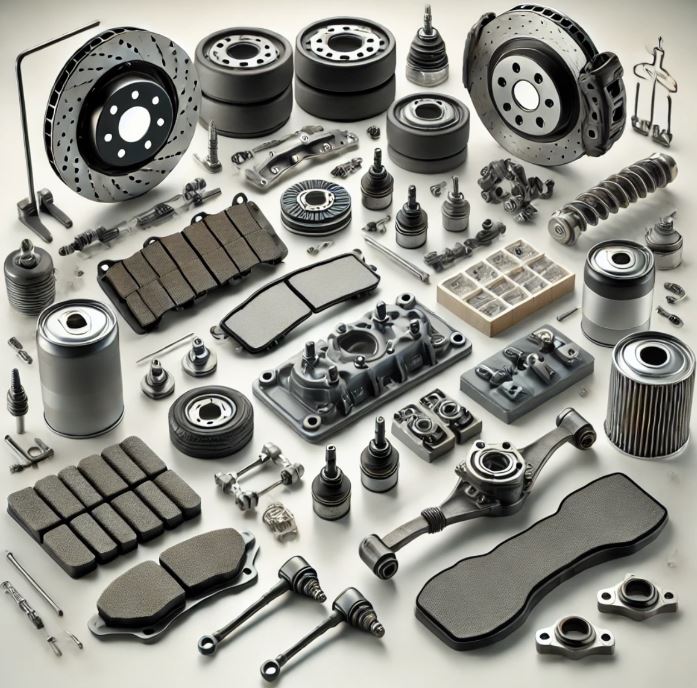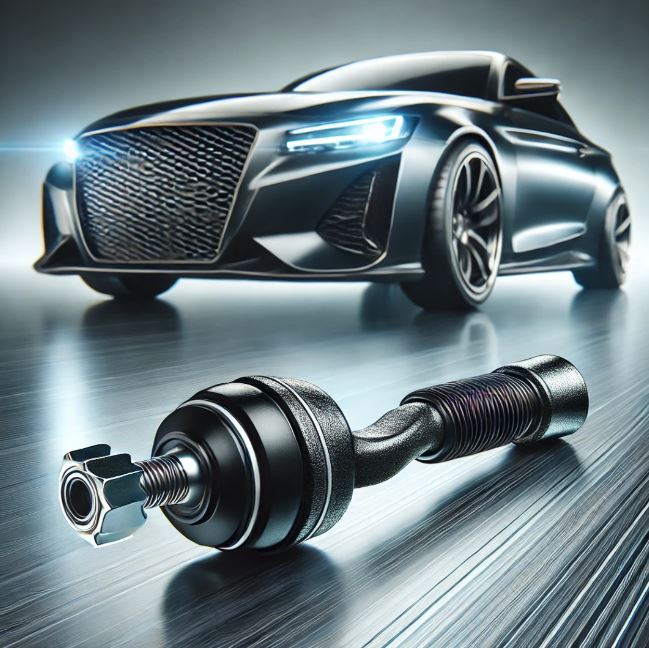Decoding OEM numbers! Choices and Correspondence in The Aftermarket Car Parts
Are you looking to upgrade your vehicle with high-quality aftermarket car parts that deliver the same performance as OEM components, often at a fraction of the cost? Find out why switching to aftermarket parts from Great Auto Parts could be the smartest move you make for your car—and your wallet. Understanding OEM numbers is crucial for this process.
What are OEM Auto Parts?
OEM auto parts, or Original Equipment Manufacturer parts, are components made by the vehicle’s original manufacturer. These parts are designed specifically for your vehicle, ensuring a perfect fit and optimal performance. While OEM parts often come with a higher price tag, this reflects their guaranteed compatibility and quality.
What are Aftermarket Car Parts?
Aftermarket car parts are produced by companies other than the original vehicle manufacturer. These parts are designed to fit and function just like OEM parts, but they are often available at a lower cost. Importantly, aftermarket car parts can offer a wider variety of choices, catering to different budgets and preferences.
Are Aftermarket Car Parts as Good as OEM?
Yes, aftermarket car parts can be just as good as OEM parts, if not better. While OEM parts come directly from the original manufacturer, reputable aftermarket car parts are produced by third-party companies. These manufacturers frequently offer parts that are more affordable without sacrificing quality. At Great Auto Parts, for instance, we ensure our aftermarket car parts meet stringent quality standards, providing you with reliability, performance, and peace of mind. You can trust that our components will deliver the same level of performance as OEM parts, often at a fraction of the cost.
OEM vs. Aftermarket Car Parts: Key Distinctions
Understanding the fundamental differences between OEM and aftermarket car parts is crucial when you are making a purchasing decision. Here’s a clear breakdown of their key distinctions:
| Feature | OEM Auto Parts | Aftermarket Car Parts |
| Manufacturer | Original vehicle manufacturer | Third-party manufacturers |
| Cost | Higher | Lower |
| Quality | Consistent | Varies (can be equal or superior) |
| Warranty | Usually included | Often included by reputable brands |
| Variety | Limited to OEM specs | Wide range of options |
| Availability | Limited to dealerships | Widely available through various retailers |
Advantages and Disadvantages of OEM and Aftermarket Parts
While OEM parts guarantee compatibility and quality, aftermarket parts offer several benefits that can make them a better choice for many vehicle owners. Let’s explore the key advantages and disadvantages of each:
Advantages of OEM Auto Parts
- Guaranteed fit and performance
- Manufacturer warranty
- Consistent quality
Disadvantages of OEM Auto Parts
- Higher cost
- Limited availability
- Less variety in options
Advantages of Aftermarket Car Parts
- Lower cost
- Wide variety of options
- Availability through multiple channels
- Can offer equal or superior quality
Disadvantages of Aftermarket Car Parts
- Quality can vary between brands
- May require more research to find reputable parts
What is an OEM Part Number?
Every OEM auto part has a unique identification number, similar to an ID card. This OEM number is assigned by the original equipment manufacturer to precisely identify and differentiate specific parts. For example, the OEM part number 6L3Z-3280-B is suitable for the FORD F150 4WD model produced from 2004 to 2008.
However, even with a basic understanding of OEM numbers, it can be challenging for consumers to accurately find the appropriate parts for their vehicles without professional assistance. When confirming OEM part numbers, consumers frequently encounter the following issues:
Finding the OEM Part Number
OEM numbers are typically a combination of numbers and letters assigned by the original equipment manufacturer. Consumers might not be familiar with the structure and format of these numbers, which leads to difficulties in finding the correct number.
Auto Parts Compatibility
Some OEM part numbers may be suitable for multiple years or models of vehicles, but not all parts have this cross-compatibility. Consumers need to ensure that the selected OEM number is compatible with their specific year and model.
Regional Variations
Some OEM numbers may vary in different regions or countries. For example, the same model might have different OEM numbers in the European and North American markets. This can lead to confusion and make it difficult for consumers to determine the correct number.
Discontinued or Replaced Parts
Over time, some OEM parts may be discontinued or replaced with updated versions. Consumers might face difficulties in finding OEM numbers that are identical to the parts they need to replace.
When you need replacement parts and are unsure of the OEM number, visiting the original manufacturer for repairs is often the simplest solution. However, original equipment parts often come with issues such as high prices and limited supply channels. Consequently, many budget-conscious or convenience-seeking vehicle owners turn to aftermarket parts suppliers. The parts sold in the aftermarket are usually referred to as aftermarket parts, and brands like MOOG and 555 are well-known aftermarket parts brands.
Aftermarket Supplier Great Auto Parts’ Support Services
Reputable aftermarket parts manufacturers offer various support services to assist consumers. Great Auto Parts provides comprehensive support, including:
Providing Part Number Cross-Reference
Aftermarket parts manufacturers can provide accurate cross-reference data to help consumers find aftermarket parts that correspond to the OEM parts they need to replace. This reference data often includes important information such as corresponding OEM numbers, vehicle models, and years.
Developing Universal Parts for Multiple Years and Models
Some aftermarket parts manufacturers have developed universal parts that are compatible with multiple years and different vehicle models. Such parts simplify consumers’ choices and reduce the difficulty of determining the correct OEM number.
Offering Confirmation Services and Technical Support
Aftermarket parts manufacturers commonly provide confirmation services and technical support to help consumers determine the correct part numbers and compatibility.
Quality Assurance and Warranty
Reputable aftermarket parts manufacturers usually offer quality assurance and a warranty to ensure the performance and durability of their parts. This allows consumers to confidently purchase aftermarket parts and enjoy corresponding protection when needed.
Where to Buy Aftermarket Car Parts
Finding a trustworthy supplier for aftermarket car parts is crucial. You can buy aftermarket car parts from reputable retailers, both online and in-store. Great Auto Parts offers a wide selection of high-quality aftermarket car parts that are designed to meet your specific vehicle needs. Whether you’re shopping for parts online or visiting a local retailer, always ensure you are purchasing from a source known for quality and service. For example, you might find valuable information on reputable suppliers on industry sites like NAPA Auto Parts or AutoZone.
What Customized Services Does Great Auto Parts Offer?
At Great Auto Parts, we specialize in providing customized services for chassis steering parts, ensuring your specific needs are met with precision and quality. Our Customized Services Include:
- Tailored solutions for unique vehicle requirements
- Technical support and consultation
- High-quality parts with guaranteed fit and performance
- Flexible order quantities to suit different needs
Conclusion
Choosing the right auto parts is essential for maintaining your vehicle’s performance and safety. By opting for high-quality aftermarket parts from Great Auto Parts, you can enjoy the same reliability and durability as OEM components without breaking the bank. Whether you need precise steering control, superior durability, or expert support, Great Auto Parts has you covered.

